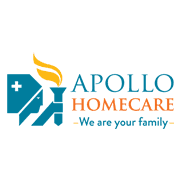
Date of posting: 05-03-2025
Reading time: 5 min read
Both men & women have many of the same medical conditions but different symptoms and risk factors. Stroke is such a condition wherein men & women have so much in common — yet so many distinctions.
A stroke, also called a “brain attack,” occurs when the blood flow to the brain stops, and the brain cells in the area start dying. However, the most crucial concern about a stroke is the fact that it affects the entire body. Earlier diagnosis can help in stopping permanent brain damage. As per government reports, strokes are the 5th leading cause of death in men & the 3rd in women.
At present, there are three types of strokes:
Ischemic stroke: Cause: Blockage in the artery. Hemorrhagic stroke: cause: blood vessel rupture. Ministroke, or Transient Ischemic Attack (TIA): Cause: A temporary blockage in the artery. Learning the signs of stroke and making the necessary changes in lifestyle may help us recognize and prevent them.
Acting F.A.S.T. Is The Key to Save a Person Experiencing a Stroke If someone near you is experiencing a stroke, follow the instructions below:
F—Face: Request the person to smile and notice if one side of the face droops.
A—Arms: Check if the person can raise both arms and notice if one arm drifts downward.
S—Speech: Check if the person can repeat a simple phrase and notice if the speech is slurred.
T—Time: In case you notice any of these signs, it’s best to call local emergency services right away.
Stroke in Men: According to a study published in a 2009 Source investigation, there were some differences in how stroke affects men and women.
The most common symptoms that were found in men were:
Stroke in Women: Women have the same but some different symptoms. Let’s have a look.
There have been situations wherein people have experienced warning signs before a stroke occurs. These signs are called transient ischemic attacks (TIA or “mini-stroke”) and describe as brief episodes of stroke symptoms. A TIA leaves no permanent brain damage but can put you at a higher risk of a subsequent stroke.
Some people have absolutely no warning signs before a stroke, and their symptoms are so mild that they are not even noticeable. In such cases, regular checkups are essential for earlier diagnosis.
Why is a Stroke rehabilitation program needed? After having one stroke, your risk of having another stroke increases; hence, it's best to follow a Stroke rehabilitation program.
A stroke rehabilitation program can help in many ways. Reversal of the effects of your stroke completely might not be possible, but you can regain your independence.
The period of your stroke rehabilitation depends on many things, such as the severity of your stroke and how early the treatment started. Stroke recovery varies from person to person. It’s hard to predict how soon one can recover. Some stroke survivors recover quickly, and some might need a little time.
Your rehab plan changes with your recovery, but most of the time, people need some form of long-term stroke rehabilitation, lasting possibly months or years after their stroke.
Practicing your rehabilitation exercises regularly and getting support from your family members can also help improve your recovery.
According to a report, with every minute that the brain is deprived of blood, around two million brain cells die due to lack of oxygen & nutrients. When your brain cells die, the body functions controlled by those cells are also lost, including functions such as walking or speaking. Hence, it’s very important that you seek emergency care as soon as possible.
How Apollo HomeCare Can Help? At Apollo HomeCare, we have a skilled team of professionals to ensure that expert treatment is available at your convenience Our stroke rehabilitation program involves a team of physical and occupational therapists who can guide you. There are a variety of exercises and other techniques to help you recover. Our two big goals of stroke rehab are enhancing muscle control and reducing spasticity. Our team of homecare experts include doctors, physicians, nurses & physiotherapists.
According to NICE, a minimum of 45 minutes of physiotherapy 5 days a week as part of a stroke rehabilitation physiotherapy can not only improve your recovery but also help you with mobility after stroke. At Apollo Homecare, we believe that stroke rehab services should continue for as long as the person shows measurable benefit from treatment and has achieved their targeted goals. According to a study, physiotherapy helps stroke survivors reduce the risk of having another stroke by up to 35%.
Regular updates regarding the progress are given to the family members, making our Home Partnership Program ideal for you & your loved ones.
At Apollo Homecare, our goal is to help stroke survivors have the best quality of life by becoming as independent as possible. For more information on our programs, log onto:

Written by:
Apollo HomeCare is a trusted name in home healthcare, dedicated to delivering world-class medical care to patients in the comfort of their homes. With a team of expert doctors, nurses, and therapists, Apollo HomeCare provides personalized healthcare solutions, from post-surgical care and chronic disease management to physiotherapy and elder care. As a thought leader in the healthcare industry, Apollo HomeCare shares insightful blogs on home healthcare trends, wellness tips, and expert medical guidance to help individuals and families make informed health decisions. Our mission is to ensure quality healthcare is accessible, convenient, and compassionate.